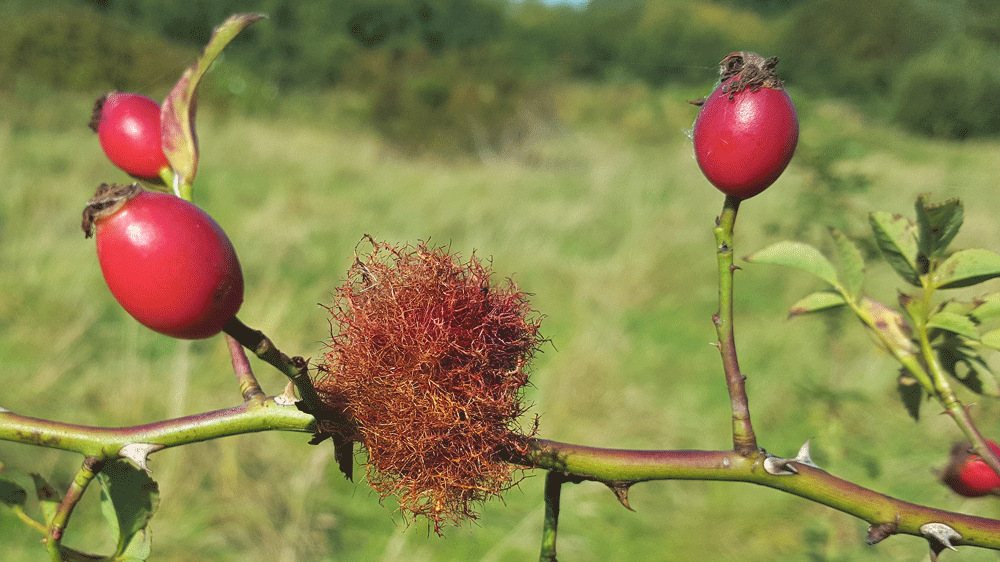

Nature on our doorsteps: Bright red plant galls
Rosaleen Dwyer is the County Heritage Officer at South Dublin County Council – every week she gives us an insight into the natural heritage around us and the beautiful biodiversity of the plants and creatures.
Early winter is a good time to see unusual brightly coloured gall structures growing on plants.
A gall is a swelling that can grow on leaf, a bud, or a stem of a plant.
They usually form when a plant is under attack from insects or from an infection. The plant responds by growing extra tissue around the point of the attack, helping the plant to protect itself. These are the swellings that we see.
Many of these gall structures are quite small and are hidden at the back of leaves where they can go unnoticed. Other plant galls are more visible due to the bright colours and unusual shapes they produce.
One such gall is the Robin’s Pincushion Gall, which is named for its bright red colour.
This gall is also called the Rose Bedeguar Gall, and it forms a bright reddish green hairy-looking growth along trailing stems of the Wild Rose.
This gall is formed by a tiny black gall wasp (only 4mm long) which lays her eggs in leaf buds along the plant’s stems in May.

The elongated red gall on Bramble stems can host up to 200 larvae.
On hatching, the larvae emit a chemical which causes the plant to respond by rapidly growing around the larvae.
The gall tissue encases the larvae within a swelling, which suits the larvae. Not only have the larvae a protected place in which to grow, but they also feed on the gall’s tissue.
One Robin’s Pincushion gall can contain up to 30 larvae, with each grub living within its own little chamber.
Other noticeable red-coloured galls occur on Bramble stems.
On Bramble, the specific gall wasp species causes an elongated swelling to form which usually causes the stem to become bent or twisted.
The Bramble gall has a bumpy surface, and one elongated red gall can host up to 200 larvae, with each bump containing a separate gall chamber that hosts an individual larva.
The larvae develop and hibernate inside the gall, emerging as new adults the following spring.
Bramble’s red galls become more visible as winter proceeds, when the plant’s leaves fall away.

